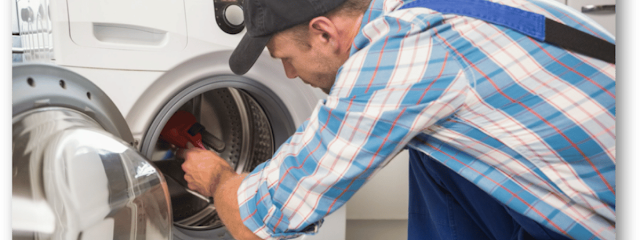How to Repair a Washing Machine Spin Dryer: A Comprehensive Guide
A washing machine is an essential appliance in most households, making laundry tasks efficient and convenient. However, like any other machine, it can encounter problems. One common issue is when the spin dryer stops working. This guide will help you understand how to 24 hour washing machine repair spin dryer, ensuring your appliance runs smoothly again.
Understanding the Spin Dryer
The spin dryer in a washing machine is responsible for spinning clothes at high speeds to remove excess water. If the spin dryer isn't working, your clothes may come out soaked, increasing drying time and energy usage. Before diving into the repair process, it's essential to understand some common issues that can affect the spin dryer.
Common Problems with Washing Machine Spin Dryers
Machine Not Draining Water
Lid Switch Issues
Drive Belt Problems
Motor Malfunctions
Imbalance Load
Tools You’ll Need
Screwdriver set
Pliers
Multimeter (for electrical testing)
Towels or a bucket (for water drainage)
Replacement parts (if necessary)
Step-by-Step Guide to Repairing a Washing Machine Spin Dryer
Safety First
Before starting any repair, ensure your safety:
Unplug the washing machine from the power outlet.
Turn off the water supply to the machine.
Check for Blockages
Draining Issues:
If your machine isn't draining water, it won't spin. Check the drainage hose for any blockages.
Disconnect the hose and inspect it for clogs. Use a long brush to clear any debris.
Ensure the drain pump filter is clean. This filter can usually be found behind a small door near the bottom of the machine.
Inspect the Lid Switch
Lid Switch Problems:
The lid switch ensures the machine doesn’t operate when the lid is open. If faulty, the spin cycle won't start.
Locate the lid switch, usually found beneath the lid or door.
Use a multimeter to test the switch. If it shows no continuity, it needs replacing.
Examine the Drive Belt
Drive Belt Issues:
The drive belt connects the motor to the drum, allowing it to spin.
Access the belt by removing the back panel of the washing machine.
Check if the belt is loose, broken, or worn out. If so, replace it with a new one.
Test the Motor
Motor Malfunctions:
The motor is the powerhouse of the washing machine. If it fails, the drum won’t spin.
Use a multimeter to test the motor's continuity. If there’s no continuity, the motor may need replacement.
Sometimes, the motor brushes wear out. Inspect and replace them if necessary.
Balance the Load
Imbalance Load:
An unbalanced load can prevent the spin cycle from working correctly. Ensure your clothes are evenly distributed in the drum.
Avoid overloading the machine. Follow the manufacturer’s guidelines for load capacity.
Additional Tips
Regular Maintenance: Regularly clean the drum, filters, and hoses to prevent future issues.
Use the Right Detergent: Using too much detergent can cause excess suds, affecting the spin cycle. Use the recommended amount.
Level the Machine: Ensure your washing machine is level. An uneven machine can cause excessive vibrations and disrupt the spin cycle.
When to Call a Professional
While many issues can be resolved with DIY repairs, some problems may require professional assistance. If you’re unsure about any step or if the problem persists after attempting repairs, it's best to contact a professional technician.
Conclusion
Repairing a washing machine spin dryer can seem daunting, but with the right tools and knowledge, many issues can be resolved at home. By following this guide, you can save time and money, ensuring your washing machine operates efficiently. Remember, regular maintenance and proper use can prevent many common problems, keeping your appliance in good working condition for years to come.

Comments
Post a Comment